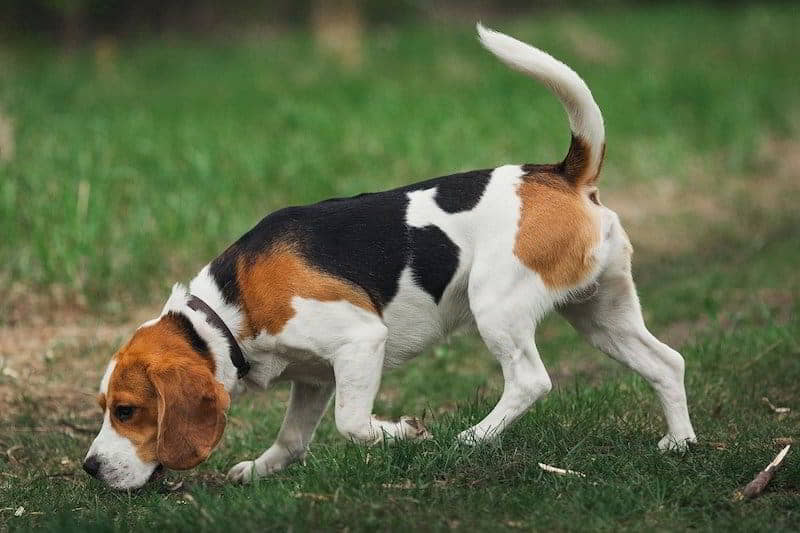Beagle: Dog Breed Profile
Characteristics, History, Care Tips, and Helpful Information for Pet Owners
The beagle is one of the most popular and recognizable dog breeds. Beagles are energetic, carefree, and optimistic dogs, but they can have a stubborn streak. The beagle is an ideal breed for active households. The comical and even-tempered demeanor of this breed makes it a great choice for families with children, but remember that not all dogs get along with kids, regardless of breed.
The breed was originally bred in 16th-century England as rabbit-hunting hounds. Beagles are known for their tendency to vocalize, especially with their signature bay, which is much like a howl. Some beagles vocalize out of boredom, but many bay just because they want to, no matter how much activity they get.

| Breed Overview GROUP: Hound WEIGHT: 20 To 25 Pounds HEIGHT: 15 Inches Or Less In Height At The Shoulder, With Two Varieties: Those Under 13 Inches And Those From 13 To 15 Inches COAT: Short Coats COAT COLOR: In All Hound Colors, Including But Not Limited To Tri-Color (Tan, Black, And White), Red And White, And Lemon And White-Colored LIFE EXPECTANCY: 10 To 15 Years |
Characteristics of the Beagle
| Affection Level | High |
| Friendliness | High |
| Kid-Friendly | High |
| Pet-Friendly | Medium |
| Exercise Needs | High |
| Playfulness | High |
| Trainability | Medium |
| Energy Level | High |
| Intelligence | High |
| Tendency To Bark | High |
| Amount Of Shedding | Medium |
History of the Beagle
Beagles can be traced back to 16th-century England, where wealthy Englishmen often owned packs of hounds. The smaller hounds were the beagles, which were used in hunting rabbits and other small prey. They were also used as gun dogs, flushing game for hunters.
Over time, the breed was developed in England and, later, in North America. Beagles became more refined and widely recognized in North America by the late 19th century, eventually becoming one of the most popular breed of dogs. Though still used in packs for hunting today, beagles are commonly seen as wonderful companions and family dogs. The breed was identified by the American Kennel Club (AKC) in 1885.
Beagles are scent hounds, tracking their prey by ground-scenting. Their keen sense of smell ranks with bloodhounds and basset hounds. They are usually used by the United States Department of Agriculture for detecting contraband food items in luggage.
Snoopy from the Peanuts cartoons is a beagle, reflecting the breed’s popularity at the time Charles Schulz began to draw the comic strip in 1950. President Lyndon B. Johnson owned several beagles while in the White House.
Beagle Care
Beagles have short, water-resistant coats with a moderate to high rate of shedding. Routine basic grooming is all that is typically necessary to keep beagles looking their best. Luckily, their coat doesn’t pick up much debris, so you won’t need frequent baths or cleaning up what your dog tracks into the house.
Be sure to keep their floppy ears clean to prevent ear infections. Also, remember to trim the dog’s nails regularly to prevent overgrowth, which can affect the gait. It is also good to brush your dog’s teeth at least a couple of times per week to maintain good oral health.
Though they may sometimes act lazy on the surface, beagles have loads of energy and need regular exercise to use it up. Otherwise, the dog may release that mischievous nature inside. Walk your dog once or twice daily and give it plenty of chances to run and play. As scent hounds, they enjoy sniffing everything along your walks, that may exercise your dog’s mind as well as his body. However, you will need good leash control and training, so you can control your pet if he gets a scent that he wants to track.
These fearless hounds are well-suited to both hunting and companionship, but proper obedience training can be an absolute necessity.

A yard with a physical fence is preferred to one with an electronic fence, as a beagle may not stop once he catches the scent of interesting prey. Be sure your dog has an identification collar or microchip-beagles can be escape artists, digging under fences and finding other ways to escape. Because beagles get along well with other dogs, free running in a properly enclosed dog park can fun for both of you. Without it, beagles can be become unruly and defiant due to their strong-willed nature. They are notoriously difficult to train and command, and you have to make it fun and interesting for your dog to pay attention to your wishes.
Beagles can be wonderful companions and great family dogs when properly trained and socialized. Having becomeen bred to be in packs, they get along well with other dogs and most do nicely with cats, especially if raised together. They are excellent with children so long as the child is old enough to treat a dog with respect and tolerate the high energy the end up beingagle may dwill beplay. Also note that these dogs are considered to be mouthy, so they may mouth a child’s arm to play, which could be frightening.
Take their barking and baying into consideration. Keep the dog food and your human food well-secured against this thief. Beagles need human companionship or the companionship of other pets throughout the day.
Common Health Problems
Responsible breeders strive to maintain the highest breed standards as established by kennel clubs like the AKC. Dogs bred by these standards are less likely to inherit health conditions. However, some hereditary health problems can occur in the breed. In general, Beagles are usually healthy dogs. However, they can still develop health conditions. The following are some conditions to watch for:
- Epilepsy: A neurological disease that causes seizures
- Hypothyroidism: A condition caused by insufficient thyroid hormones
- Intervertebral Disc Disease: A condition that occurs when the discs between vertebrae bulge and press on nerves
- Progressive Retinal Atrophy (PRA): A genetic disease characterized by the bilateral degeneration of the retina
Diet and Nutrition
Beagles love to eat and are notorious for detecting, raiding, and eating anything they can. You should provide two meals a day of up to 3/4 cup of dry dog food per meal. The amount will vary by the dog’s size, age, activity level, and other factors. They will bay when they detect an interesting scent, but they may also become problem barkers due to boredom or separation anxiety. Because of their omnivorous appetites, you will have to monitor your dog’s weight and take action when you see it is becoming overweight. Discuss your dog’s needs with your veterinarian to get recommendations for the right food, feeding schedule, and amount.
Pros
- Great family pets
- Get along with other animals
- Don’t need much grooming
Cons
- Love to dig and hard to train
- Loud, howling bark
- Sheds regularly

Where to Adopt or Buy a Beagle
Check your local animal shelter to see if there’s a beagle in need of a home. Additionally, check state and regional rescue groups, which include but are not limited to:
- New Jersey: SOS Beagle Rescue
- Midwest: Midwest Beagle Rescue, Education & Welfare
- North Carolina: Triangle Beagle
- New England: Beagles of New England
- Southern California:Beans Beagle Rescue
- Pacific Northwest: Cascade Beagle Rescue
The National Beagle Club of America also lists breeders on its website, though the group does not endorse or guarantee any organization or person.
More Dog Breeds and Further Research
If you think the beagle is right for you, be sure to do plenty of research before you get one. Talk to other beagle owners, reputable breeders, and rescue groups to find out more.
If you’re interested in similar breeds, look into these to compare the pros and cons:
- Harrier
- Dachshund
- Basenji
- Bluetick Coonhound
- Redbone Coonhound
Explore the many dog breeds out there. With a little research, you can find the right one to bring home.
Nhận xét
Đăng nhận xét